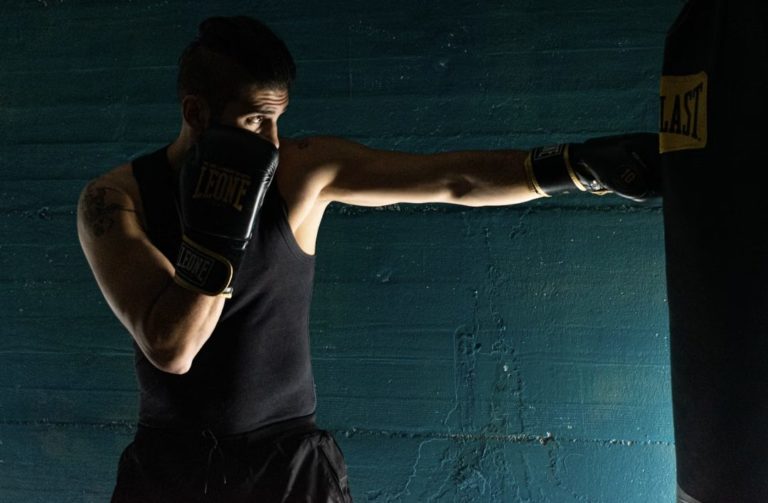Jabs Every Boxer Should Know: Master the Basics to Improve Your Game
Boxing is a sport that requires a combination of strength, speed, and agility. Any good boxer will tell you that the majority of your punches should be jabs to establish your rhythm and set up your combos. The jab is the most basic punch in boxing, but it is also the most versatile. Your lead hand is more versatile than your rear hand, and the jab is like a Swiss army knife that can be used in any situation.
In this article, you will learn about the seven different jabs every boxer should know. These jabs include the basic jab, the slip jab, the power jab, the body jab, the double jab, the backstep jab, and the pivot jab. By learning these different types of jabs, you can improve your boxing ability and become a more well-rounded fighter.
Key Takeaways
- The jab is the most versatile punch in boxing and should be used to establish rhythm and set up combos.
- There are seven different types of jabs every boxer should know, including the basic jab, slip jab, power jab, body jab, double jab, backstep jab, and pivot jab.
- Learning these different jabs can improve your boxing ability and make you a more well-rounded fighter.
7 Jabs Every Boxer Should Know
Boxing is a sport that requires a lot of technique, strategy, and practice. One of the most important techniques in boxing is the jab. A jab is a quick, straight punch that is thrown with the lead hand. It is used to set up other punches, keep an opponent at bay, and score points. There are many different types of jabs in boxing, but every boxer should know these seven:
The Basic Jab
The basic jab is the first jab that every boxer should learn. It is a quick, straight punch that is thrown with the lead hand. To throw a basic jab, a boxer should step forward with their lead foot, unlock and extend their elbow, and rotate their lead fist 90 degrees. The lead shoulder should be raised to protect the chin from any counters. The basic jab is a versatile punch that can be used to set up other punches, keep an opponent at bay, and score points. It is important for a boxer to master the basic jab before moving on to other types of jabs.
The Slip Jab
The slip jab is a variation of the basic jab. It is used to combine offense and defense by getting the boxer’s head off the center line. To throw a slip jab, a boxer should throw a basic jab and slip towards their rear side at the same time. The rear hand can be kept in front of the face to block any returning jabs. The slip jab is an effective punch that can be used to set up other punches and keep an opponent off balance.
The Power Jab
The power jab is a jab that is thrown with more power than the basic jab. It is a quick, straight punch that is thrown with the lead hand, but with the full weight of the body behind it. To throw a power jab, a boxer should hop in so that their front foot leaps forward and their back foot replaces their front foot. As they reach their new position, they should extend their lead hand to complete the jab. The power jab is a powerful punch that can be used to disrupt the range between the boxer and their opponent.
The Body Jab
The body jab is a jab that is aimed at the opponent’s stomach instead of their head. It is a great punch for an opponent who is curled up in a high guard. After getting hit in the stomach, the opponent will lower their guard, which will then open their head as a target. The body jab can be mixed up with well-timed jabs to the head so that the opponent cannot decide whether to keep their arms up or down.
The Double Jab
The double jab is a combination of two basic jabs thrown in quick succession. It is a fast and crisp punch that is hard to predict. The double jab is less about power and more about surprising the opponent and throwing them off rhythm. It is an essential combo that every boxer should know.
The Backstep Jab
The backstep jab is a jab that is thrown while stepping back with the rear foot. It is used to gain distance from aggressive opponents who only advance. Once the opponent gets a few of these to the face, it disrupts their rhythm and discourages them from coming forward. Since the boxer is stepping back, there is no weight behind this jab, so it will be weak. The backstep jab can be combined with another punch or angle change for maximum effect.
The Pivot Jab
The pivot jab is a jab that is thrown while pivoting the back foot clockwise and pulling the hip back so that the boxer has rotated 30-45 degrees on their opponent. This allows the boxer to change the angle and step out of harm’s way. From here, if the boxer decides to throw a straight cross, it will hit the opponent at an angle. The pivot jab can be used with a double or triple jab so that the boxer is moving in a circle around their opponent.
In conclusion, every boxer should know these seven jabs. They are essential punches that can be used to set up other punches, keep an opponent at bay, and score points. By mastering these jabs, a boxer can become a versatile and effective fighter.
Why Learning Different Jabs is Important
Learning different jabs is crucial to becoming a flexible and skilled boxer. The jab is an essential punch that can help you gain and judge your range, set up combinations, test your opponent’s defense, establish your rhythm, and break your opponent’s rhythm. While your rear hand delivers power, your jab can keep your opponent occupied throughout the fight, especially if you throw it with different angles and timing.
Your jab can also help you establish your defense. For example, the slip jab, backstep jab, and pivot jab can all be used to defend against aggressive opponents. Even a soft basic jab can be used to blind your opponent’s vision. By mastering different jabs, you can create openings for power punches like the cross, hook, and uppercut, and defend against your opponent’s combos.
Common mistakes include dropping your guard after throwing a jab, which can leave you vulnerable to counter punches. To defend against these counter punches, you can use a high guard or parry your opponent’s punches. Learning from boxing legends like Muhammad Ali and Floyd Mayweather can also help you improve your jab and overall technique.
In summary, learning different jabs is essential to becoming a skilled boxer. It allows you to establish your offense and defense, create openings for power punches, and keep your opponent occupied throughout the fight.
Where to Go From Here?
Now that you have learned the different types of jabs and how to execute them, it’s time to put them into practice. Practice the jabs at different angles and speeds during your shadowboxing sessions. Remember, the jab is not only used at the beginning of a combination but can also be used at the end.
To improve your boxing skills, it’s important to have the right equipment. Consider investing in gloves, hand wraps, and other protective gear. Check out these articles for recommendations on the best boxing equipment:
- Best Boxing Jump Ropes
- Best Boxing Gloves
- Best Boxing Hand Wraps
- Best Boxing Head Gear
- Best Boxing Shoes
- Best Boxing Groin Protectors
Additionally, working with a coach and incorporating drills with a heavy bag can also help improve your technique. Keep practicing and perfecting your jabs to become a better boxer.
Frequently Asked Questions
What are the different types of jabs used in boxing?
Boxing utilizes several types of jabs, including the standard jab, the power jab, the flicker jab, the step jab, the pivot jab, and the back jab. Each of these jabs serves a specific purpose in a boxer’s arsenal.
How does a flicker jab differ from a traditional jab in boxing?
The flicker jab is a faster version of the traditional jab. It is executed by snapping the lead hand out quickly and retracting it just as fast. This jab is used to disrupt an opponent’s rhythm and set up power punches.
What are some effective jab exercises for improving boxing technique?
There are several exercises that boxers can use to improve their jab technique. These include shadowboxing with a focus on the jab, practicing on a heavy bag, and working with a speed bag. These exercises can help improve speed, accuracy, and power in the jab.
Can you explain the mechanics of a step jab in boxing?
The step jab involves stepping forward with the lead foot while simultaneously throwing a jab with the lead hand. This jab is used to close the distance between the boxer and opponent while also delivering a powerful punch.
What is the purpose of a pivot jab, and how is it executed?
A pivot jab involves pivoting the lead foot while throwing a jab with the lead hand. This jab is used to create an angle on the opponent while also delivering a powerful punch. To execute this jab, the boxer must pivot on the lead foot while simultaneously throwing the jab.
What does the term ‘back jab’ signify in the context of boxing?
The back jab, also known as the counter jab, is a jab thrown in response to an opponent’s punch. This jab is used to disrupt an opponent’s rhythm and set up counterattacks. It is executed by quickly snapping the lead hand out while simultaneously stepping back to avoid the opponent’s punch.


